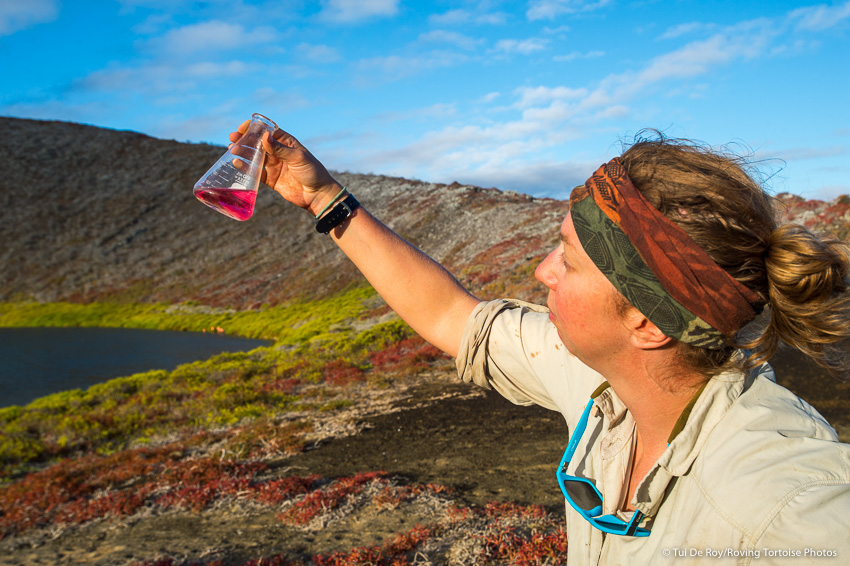NSF RAPID grant to study 2015-2016 El Nino
The Thompson lab received a NSF RAPID grant to study the impacts of the 2015-2016 El Nino event. This project aimed to assess the impact of the 2015/2016 El Niño event on the climate and lake conditions of two key Galapagos climate archives: Bainbridge and Genovesa Crater Lakes. Sediments accumulating at the bottom of these lakes have provided records of Galapagos climate and the frequency of El Niño and La Niña events over the past ~6000 years. Motivated by the importance of these lakes for our understanding of climate in the tropical Pacific Ocean, we have been monitoring the link between climate, lake conditions and the physical and chemical properties of the sediments accumulating in these lakes since 2009. However, the 2015/2016 El Niño event provided the first opportunity to assess the impact of large El Niño events on these lake systems.
This RAPID funding supported 3 trips for a team of three to collect data and redeploy long-term monitoring instruments at Bainbridge and Genovesa crater lakes prior to and following the 2015/2016 El Niño event. By allowing us to isolate the effects of a strong El Niño event on the sediments accumulating in the lakes, we were able to directly test two competing hypotheses for what drives the formation of white (calcium carbonate, CaCO3) layers in the lakes. Earlier work suggested that these layers formed during El Niño events, while our monitoring results (now including the large 2015-16 event) suggest the opposite: that these layers are deposited in these lake systems during cool, dry, productive La Niña events. Based on this new interpretation, lake sediments accumulating at the bottom of these lakes may provide a record of the frequency of both El Niño and La Niña events over thousands of years.
This project also provided valuable field experience for 2 Ecuadorian masters students, 1 new PhD student, and 2 postdoctoral researchers. The samples collected during this trip have also seeded a new collaborative geobiology project investigating stratification, hypoxia and biological productivity in these lakes. Throughout both trips (Nov 2015 & May 2016), Thompson posted blogs on her website (http://dianemthompson.blogspot.com/) to show the team’s field experience, observations, and findings. These blogs also placed this latest El Niño in the context of previous events using historical records (e.g., family letters, anecdotes and papers) obtained from local collaborators on the islands. In May 2016, Thompson also presented the team’s observations of the 2015-16 El Niño and the overall monitoring results to the local scientists and community at the Charles Darwin Research Foundation.
